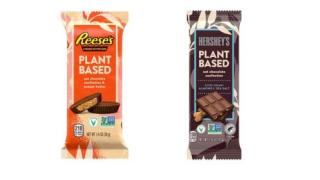News Briefs
Fabric, Synergy Partner to Optimize Warehouse Processes
On-demand fulfillment provider Fabric has formed a strategic partnership with Synergy Design & Integration to employ fulfillment automation technology to streamline and optimize warehouse processes.
Formed in 2016 with the goal of creating a lean but completely customer-focused organization, Synergy’s team has more than 100 years of combined experience designing and building custom turnkey material-handling systems for industries such as retail, e-commerce and more. As a member of Fabric’s newly launched Partner Elite Program, Synergy will help clients identify and eliminate inefficiencies and increase warehouse volume.
“With this partnership, we’re bringing together innovative solutions that will ensure customers remain competitive and agile,” said Kimberly Barr, global director of partnerships of Fabric, which is based in Tel Aviv, with a main office in New York. “Customer expectations continue to rise across industries, and automated fulfillment is becoming a must-have. Fabric and Synergy are empowering retailers to meet those expectations.”
“The world’s largest brands are leveraging automated solutions for speed and efficiency in their fulfillment operations, and this powerful combination between Fabric and Synergy will deliver that capability to retailers of all sizes,” said Steve Sipkovsky, COO of Franklin, Tenn.-based Synergy. “This partnership offers a way for retailers to solve the ongoing challenge of a labor shortage and rising wages.”
The Fabric Partner Elite Program offers a cost-effective solution to improve customer experience, no matter the business model. System integrators receive training to sell and support joint implementation efforts, referral partners get access to tools that accelerate mutual sales and deepen relationships, and original equipment manufacturers (OEMs) can leverage Fabric’s technology to provide high-density storage and increased throughput to their clients at a competitive cost advantage.
Hershey Launches Plant-Based Confections
The Hershey Co. is expanding its candy portfolio to include options for vegans and those looking for non-dairy treats and sweets. Although peanuts and cocoa beans are already considered plant-based ingredients, the venerable brand is adding new milk chocolate alternatives to its lineup.
This month, the Hershey, Pa.-based company is rolling out Reese’s Plant Based Peanut Butter Cups and in April, will add Hershey’s Plant Based Extra Creamy with Almonds and Sea Salt. Both of these products, and others that will be added to Hershey’s Plant Based portfolio, are made with dairy alternatives.
[Read more: "How CPGs Anticipate the Needs of Shoppers"]
"We are excited to introduce these delicious, plant-based options," said Teal Liu, brand manager of Hershey’s Better For You group. "Our purpose is to create more moments of goodness for consumers. Those moments are now more accessible for chocolate lovers looking for plant-based alternatives."
The move comes at a time of growing consumer interest in plant-based alternatives. In a January report, the International Food Information Council (IFIC) projected that plant-based snacks will be a growing trend in 2023.
For its part, Hershey has continued to broaden choices for consumers with different preferences and dietary needs. Its diversified snack line includes other products like no sugar added, zero sugar and high protein offerings.
In other news, the company announced that it has reintroduced Hershey’s SHE bars and is partnering with the nonprofit Girls on the Run organization to curate more than 200 adjectives featured on those chocolate bars. Limited-edition Hershey’s SHE bars will be available starting this month – Women’s History Month – in four unique wrappers, in both 1.55-oz. and 4.4-oz. sizes.
Winn-Dixie Lowers Prices on Grocery Essentials
In an effort to help customers save money at the register this spring, Winn-Dixie is bringing down prices on more than 150 everyday products. The grocer’s Down Down program includes pantry staples, fresh produce and dairy items, frozen meals, snacks, health and beauty products, cleaning supplies, and more.
The program encompasses both private-label and national brands, and discounted products vary by season. Down Down items are marked with a red hand on signs and tags throughout Winn-Dixie stores, and special pricing is also available online.
[Read more: “Winn-Dixie Widens Florida Footprint”]
“We know saving money without sacrificing quality is a top priority, and we are committed to helping our customers stretch their hard-earned dollars,” said Dewayne Rabon, chief merchandising officer for Winn-Dixie parent company Southeastern Grocers. “Through our signature Down Down program, with prices that are down and staying down, we strive to make it easy for busy shoppers to maximize value on their grocery budgets. At our local Winn-Dixie stores and online, our neighbors can trust they will find top quality items at winning prices.”
Southeastern Grocers recently widened its curbside pickup service to nearly 300 Winn-Dixie stores and Harveys Supermarket locations across its footprint. Shoppers in parts of Alabama, Florida, Georgia, Louisiana and Mississippi can order online and get the same prices, savings and promotions as they would in the physical store.
Jacksonville, Fla.-based Southeastern Grocers is one of the largest conventional supermarket companies in the United States, with grocery stores, liquor stores and in-store pharmacies serving communities throughout Alabama, Florida, Georgia, Louisiana and Mississippi. Its banners include Fresco y Más, Harveys Supermarket and Winn-Dixie grocery stores. The company is No. 39 on The PG 100, Progressive Grocer's 2022 list of the top food and consumables retailers in North America.
GS1 U.S. Issues New Guidance for Food Industry Traceability
Not-for-profit information standards organization GS1 US has published a new guideline to help the food industry use GS1 Standards in compliance with the U.S. Food and Drug Administration’s (FDA’s) Food Traceability Final Rule, which requires additional traceability records for certain foods under Section 204 of the Food Safety Modernization Act (FSMA).
[Read more: "USDA Strengthens Rules Related to Organic Products"]
Industry members of the GS1 US Foodservice and Retail Grocery Working Groups created the “Application of GS1 System of Standards to Support FSMA 204” document, which lays out the best practices for product and location identification, structured product descriptions, and the recording of common industry-defined events to support the additional traceability requirements. The Final Rule requires companies that physically handle certain foods on the FDA Food Traceability List to keep more detailed records on critical tracking events and key data elements for two years. If a recall occurs, data transfer of those records will also be required within 24 hours to expedite recalls and to help limit foodborne illness. The new guidance document shows how voluntary GS1 Standards can help prepare systems and business processes to meet the January 2026 compliance deadline.
“Through our collaboration with many stakeholders, technology providers and associations, industry now has guidance that will help them extend their investment in GS1 Standards and also support data requirements for this new Final Rule,” noted Angela Fernandez, VP of community engagement at Ewing, N.J.-based GS1 US. “This guideline will help all companies that handle food to maximize supply chain visibility and ultimately advance food safety practices.”
USDA’s Proposed Rule to Better Clarify ‘Made in the USA’ Claims
The U.S. Department of Agriculture (USDA) has released a proposed rule with new regulatory requirements to better align the voluntary “Product of USA” label claim with consumer understanding of what the claim means. The proposed rule allows the “Product of USA” or “Made in the USA” claim to be used on meat, poultry and egg products only when they are derived from animals born, raised, slaughtered and processed in the United States.
In July 2021, USDA initiated a comprehensive review to understand what the “Product of USA” claim means to consumers. As part of its review, USDA commissioned a nationwide consumer survey that revealed the current “Product of USA” labeling claim is misleading to a majority of consumers, with a significant portion believing it means that the product was made from animals born, raised, slaughtered and processed in the United States.
[Read more: “Cuts to SNAP Benefits and What They Mean for Grocers”]
USDA’s comprehensive review shows that there is a clear need to revise the current label claim so that it more accurately conveys U.S. origin information. The increased clarity and transparency would prevent consumer confusion and help ensure that consumers understand where their food comes from.
“American consumers expect that when they buy a meat product at the grocery store, the claims they see on the label mean what they say,” said Agriculture Secretary Tom Vilsack. “These proposed changes are intended to provide consumers with accurate information to make informed purchasing decisions. Our action today affirms USDA’s commitment to ensuring accurate and truthful product labeling.”
USDA encourages stakeholders, both domestic and international, to comment on the proposed rule, which will be open for public comment for 60 days after being published in the Federal Register. Public comments can be submitted at https://www.regulations.gov.
Blue Apron Does Brunch
Meal kit company Blue Apron has introduced its first-ever Brunch Box, which is available to order now. Designed to serve up to six, the limited-time seasonal offering features Blue Apron’s most popular breakfast recipes with brand-new ingredients. The full menu consists of:
• Avocado Toast with Feta, Radishes & Chives
• Brown Sugar & Maple Candied Bacon
• Cheesy Asparagus Quiche with Romesco Aioli & Marinated Artichokes
• Overnight French Toast Bake with Blueberries & Lemon Curd
[Read more: "Blue Apron Files At-the-Market Equity Offering Program"]
“Our Brunch Box includes recipes to make guests happy, from vibrant plant-forward options with fresh produce, to more decadent choices for the sweet tooth at the table,” said John Adler, SVP of physical product at New York-based Blue Apron. “With this menu, customers don’t have to choose. Stemming from the ongoing success of our breakfast add-ons, we’ve evolved the category to provide customers with a complete brunch offering.”
Shipping April 3 through Mother’s Day (May 14), or while supplies last, the Brunch Box can be ordered as part of a subscription through Blue Apron’s website and mobile app, and without a subscription on the Blue Apron Market, Amazon.com and Walmart.com. The company offers seasonal meal kits throughout the year that can be purchased with or without a subscription.






